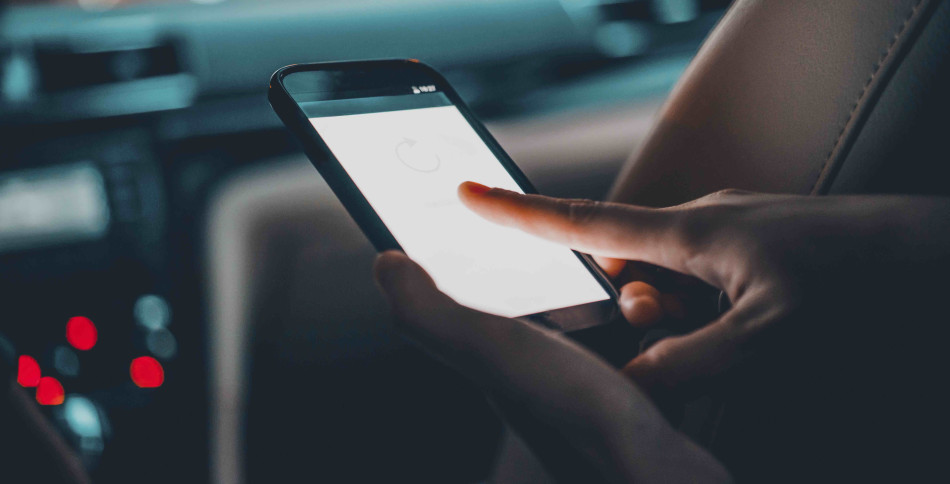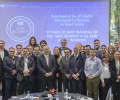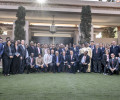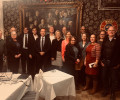From AUTO #12: Blurred Lines

It’s a technology story as old as technology itself: new areas of innovation open up a landscape of huge profit possibility, which in turn leads to a flood of competing systems all attempting to stake territorial claims aimed at securing a dominant position. Vinyl versus CD, VHS versus Betamax, HD DVD pitted against Blu Ray; the shake-up to be recognised as the platform of choice for consumers has been going on since the dawn of the electric age.
The latest and most fiercely fought over battleground is within the automotive world, where advances in technology over the past 20 years have created huge opportunities and led to an environment in which motor manufacturers, technology giants and mobile communications conglomerates all chase a share of the market known as ‘the connected car’.
This territorial battle extends to all major areas of connected activity, with the most high profile being the platforms upon which the connectivity rests. In short, does connectivity in your car rest with the car itself or with your smartphone?
Traditionally car makers have strenuously resisted ceding access to vehicle systems by outside developers and have chosen instead to build their own connectivity systems, with Ford, for example, continuing to champion its own in-car Sync infotainment system.
However, with this year’s launch of the latest Sync 3 version of the system, Ford has reined in its former opposition and is set to offer compatibility with the two biggest tech company offerings – Apple’s CarPlay system, launched last year, and Google’s Android Auto, finally released earlier this year.
Ford is not alone in its decision. The power of Google and Apple as the native host of a plethora of auto-connectivity-related apps and the familiarity of smartphone operating systems has forced motor manufacturers to admit partial defeat. Android Auto is being or will be offered by some 38 brands, while CarPlay is being offered by 34 brands as well being prepared as an after market add-on to compatible Pioneer and Alpine entertainment systems.
Does it mean an inevitable migration to the smartphone becoming the brains behind a series of ‘dumb’ terminals in your car? It’s not clear, but car makers are unlikely to cede that much territory to companies that could become their bitter rivals in the manufacture of the driverless cars of the future.
There are signs that car companies will continue to pursue their own connectivity routes. With mapping being a key consideration in the future of connected cars and driverless cars in particular, a consortium of manufacturers – comprising Audi, BMW and Daimler – last month spent $3 billion acquiring Nokia’s mapping arm HERE, a company with 30 years experience in GPS mapping. The purchase is aimed at inuring the companies against the march of Google and Apple mapping as the tech giants eye the driverless car market.

Data dilemma
Beyond the hardware used, there is the thorny topic of how information is carried and who provides the cellular connection.
In the United States, as part of its second-quarter figures announcement for this year, telecoms provider AT&T revealed that it had gained 2.1 million new customers of which 1m were connected car subscriptions through its status as the operator chosen by General Motors for its OnStar service.
The service, provided since the late 1990s, has traditionally involved call centre access to motoring-related help. But the deal with AT&T also provides for the roll out of 4G LTE, the fastest kind of wireless internet connectivity available, a move that GM believes will allow it to provide expanded offerings such as custom apps, streaming entertainment and enhanced diagnostic links to dealers.
The sticking point remains the cost of the cellular connection, with customers reckoned to be resistant to paying an additional cellular subscription. The solution being hinted at by GM is to fold the OnStar subscription into a customer’s existing cell phone package. That means tying car customers to particular cell phone providers and once again there is a battleground developing as mobile providers jockey for position.
There remains one further area of contention – ownership of the vast amounts of data that connected cars will generate.
In the US, the National Highway Transportation Authority (NHTSA) has stated that it “considers the owner of the vehicle to be the owner of data collected from an EDR (Electronic Data Recorder). NHTSA will always ask permission from the vehicle owner before downloading any information for use in government databases”.
However, it also added that “ownership of the EDR and EDR data is a matter of state law, and such provisions vary considerably”.
That suggests that there is a legal battle to be had and it’s one that some car companies seem willing to fight, with Audi CEO Rupert Stadler quoted by Bloomberg last December as saying, “The data we collect is our data and not Google’s data. When it gets close to our operating system, it’s hands off.”

This sentiment has been echoed in comments from Volkswagen CEO Martin Winterkorn and Daimler CEO Dieter Zetsche.
However, despite the sizeable obstacles that still need to be overcome in the development of a somewhat unified world of connected systems, convergence is firmly on the agenda at the grander level of infrastructure, with car makers calling for concerted efforts at state level to implement infrastructural digitalisation.
Speaking at a recent economic conference in Berlin, Stadler called for digitalisation to top the political and economic agenda.
“Economics and politics must together shape the digital revolution,” he said. “Seventy-five per cent of the infrastructure of the year 2050 has not yet been built. That’s a great opportunity for uniform standards in the operating system of the city of the future.”
The Audi chief’s statements have been echoed by Volvo Vice-President and Group CIO Klas Bendrik: “Imagine a world where road status data collected by cars is shared with other road users and with local authorities through a connected car cloud: a world where the benefits of anonymised data-sharing supports convenience and life-saving services while helping to contribute to a better society.
“Car makers have the potential to deliver real benefits to society by democratizing anonymised car data.”
To read the full article see AUTO Issue 12 here

 Facebook
Facebook Twitter
Twitter






